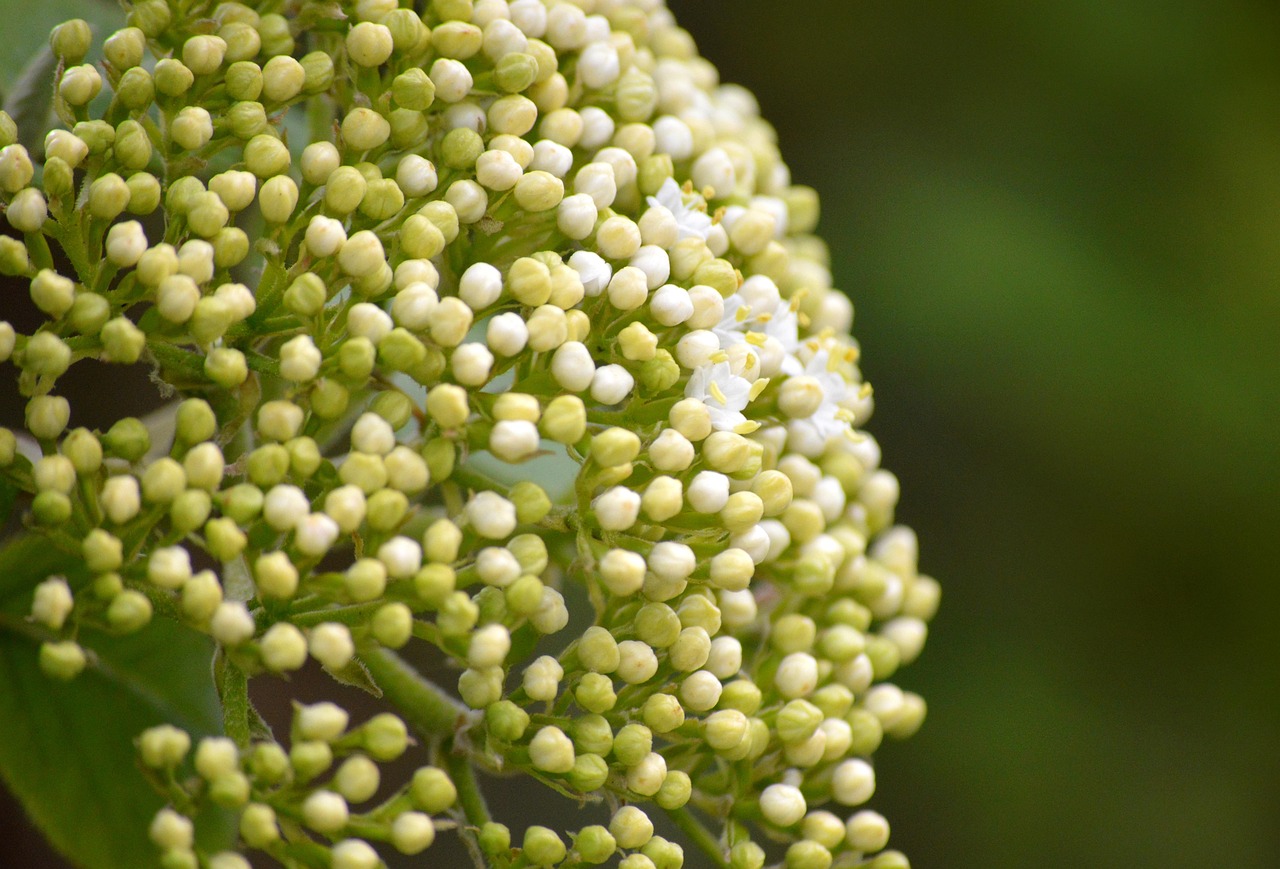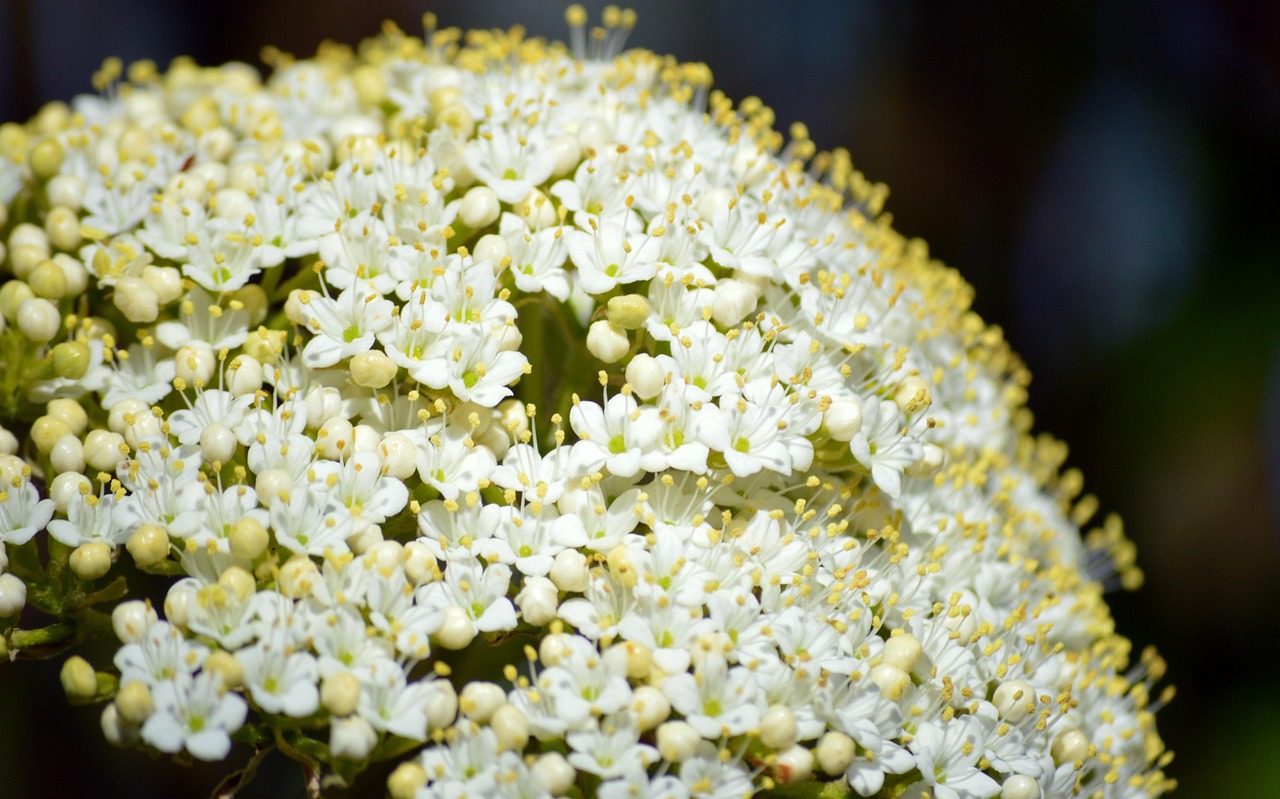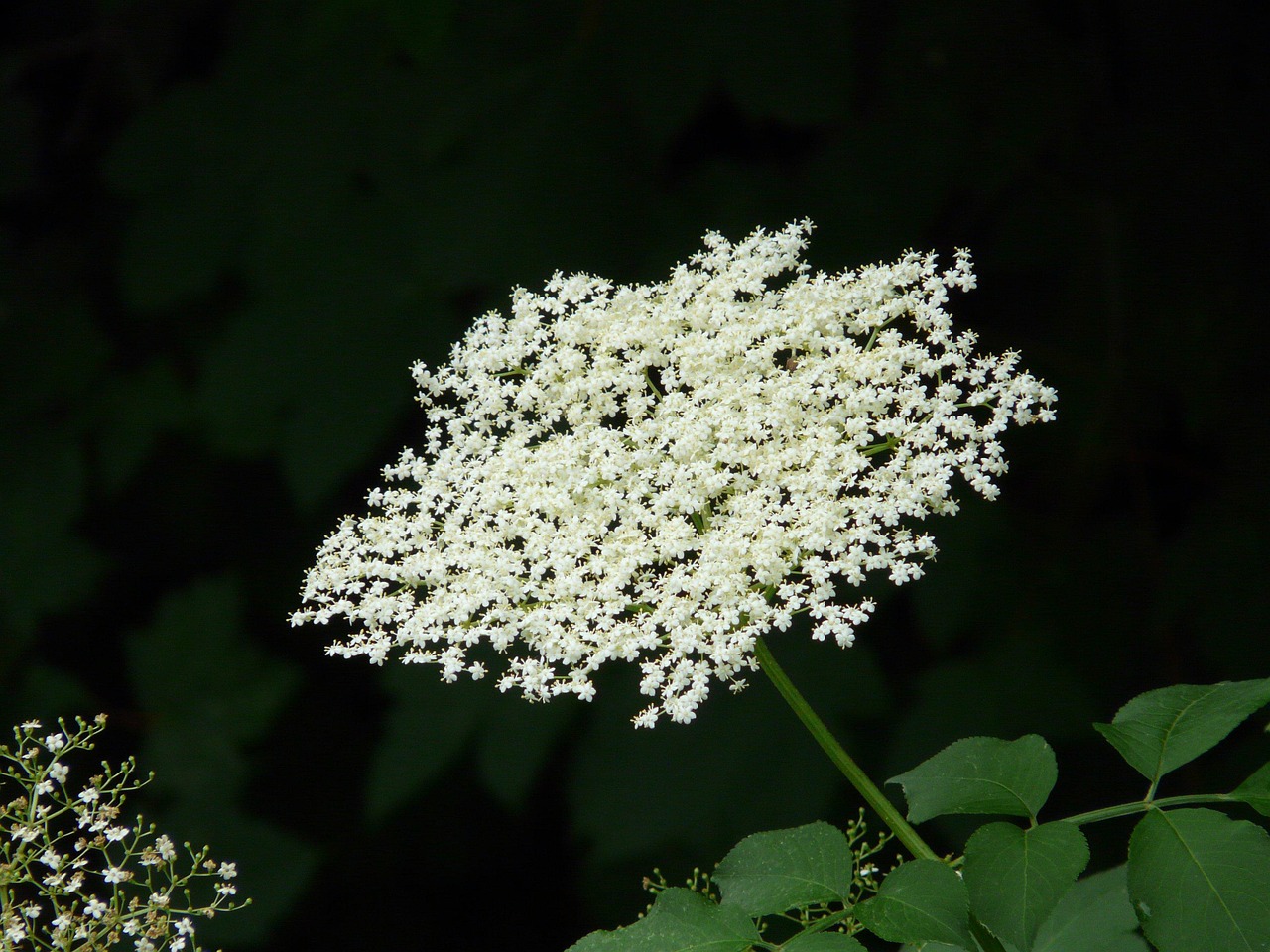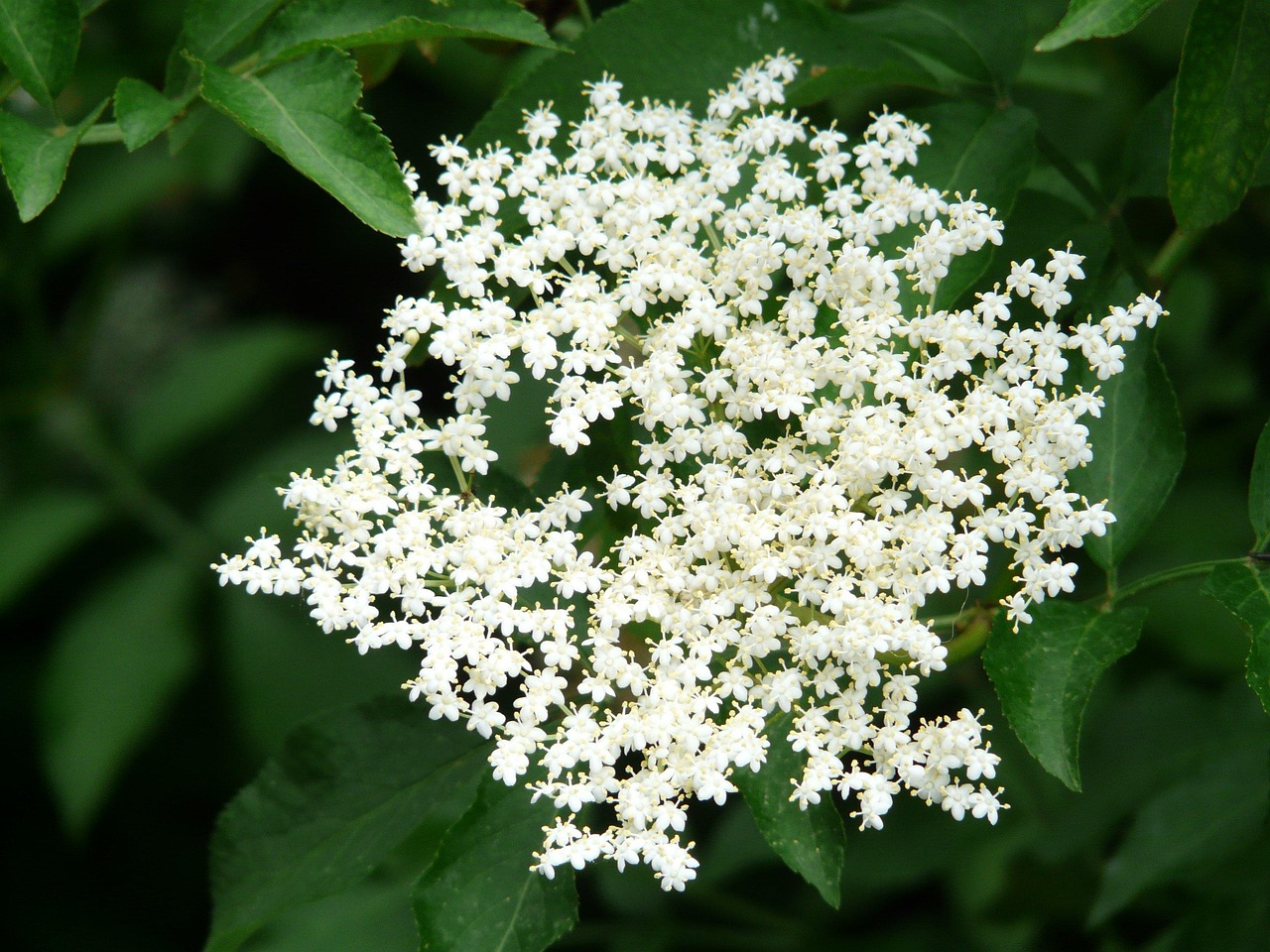The elder tree, or Sambucus, typically exhibits a moderate growth rate of about 3 to 10 feet per year under optimal conditions. This makes it a popular choice for native landscaping, providing quick greenery and habitat for wildlife.
Elder trees are a vital part of many ecosystems, especially in North America. They are known for their fast growth and adaptability to various soil types and conditions. As a native species, elder trees support local wildlife by offering food and shelter. Their flowers attract pollinators, while the berries serve as food for birds and other animals.

Understanding the growth rate of elder trees is important for landscaping projects. This knowledge helps gardeners select the right planting locations and plan for future maintenance. With the right care, elder trees can thrive and contribute significantly to a native landscape.
Factors Influencing Elder Tree Growth Rate
Several factors impact the growth rate of elder trees. These include soil quality, sunlight exposure, water availability, and overall climate conditions. Here are some key factors to consider:
- Soil Quality: Elder trees prefer well-drained, moist soils rich in organic matter. Poor soil can slow growth.
- Sunlight Exposure: Full sun to partial shade is ideal. Adequate sunlight encourages robust growth.
- Water Availability: Regular watering helps sustain growth, especially in dry periods.
- Climate Conditions: Elder trees thrive in temperate climates but can tolerate a range of conditions.
By ensuring optimal conditions, gardeners can enhance the growth rate of elder trees. This will not only benefit the trees but also contribute to the overall health of the landscape.

Growth Stages of Elder Trees
Elder trees undergo several growth stages from seedling to maturity. Understanding these stages can help gardeners manage their expectations regarding growth rates and care needs.
| Growth Stage | Age (Years) | Height (Feet) |
|---|---|---|
| Seedling | 0-1 | 0.5-1 |
| Juvenile | 1-3 | 1-5 |
| Mature | 3-10 | 5-15 |
| Fully Mature | 10+ | 15-30 |
Initially, the seedlings are small and fragile. With proper care, they quickly transition into the juvenile stage where their growth accelerates. By the time they reach maturity, elder trees can add significant height rapidly. They reach full maturity at around ten years, providing ample benefits to the surrounding ecosystem.
Cultural Significance of Elder Trees
Elder trees have been valued for centuries for their medicinal properties and nutritional benefits. Various cultures have utilized elder flowers and berries in traditional remedies and culinary applications. For example, elderberry syrup is popular for its immune-boosting properties.

This cultural significance enhances the appeal of elder trees in landscaping. They are not only functional but also enrich the landscape with a sense of history and connection to nature. Planting elder trees can foster a greater appreciation for local flora and fauna.
In addition to their practical uses, elder trees play a role in enhancing biodiversity. They provide habitat for various species, including birds, insects, and small mammals. The presence of elder trees in native landscaping promotes ecological balance and supports sustainable practices.
As interest in native landscaping continues to grow, understanding the growth rate of elder trees becomes increasingly important. This knowledge allows gardeners and landscapers to make informed decisions about planting and maintaining these valuable trees in their environments.
Planting Elder Trees: Best Practices
When considering planting elder trees, several best practices can help ensure their healthy growth and successful establishment in native landscaping. Understanding the right time, location, and method for planting can make a significant difference in their growth rate and overall health.

Optimal Planting Time
The best time to plant elder trees is during the early spring or fall. Planting during these seasons allows the trees to establish their root systems before winter or summer heat. Here are some reasons why these times are ideal:
- Spring Planting: The soil is warming up, encouraging root growth. This timing allows the tree to take full advantage of the growing season.
- Fall Planting: Cooler temperatures reduce stress on the tree. The trees can establish roots while the above-ground growth slows down.
Site Selection
Choosing the right site for planting elder trees is crucial for their growth. Consider the following factors when selecting a location:
- Sunlight: Elder trees thrive in full sun but can tolerate partial shade. Ensure they receive at least six hours of sunlight daily.
- Soil Type: Well-drained soil rich in organic matter is ideal. Sandy or loamy soils promote healthy root development.
- Water Drainage: Avoid areas with poor drainage. Elder trees prefer moist conditions but can suffer from root rot in waterlogged soils.
Planting Method
The method of planting also affects the growth rate of elder trees. Here are the steps to follow for proper planting:
- Prepare the Site: Clear the area of weeds and debris. Dig a hole that is twice as wide and just as deep as the root ball of the tree.
- Soil Amendment: Mix compost or well-rotted manure into the soil to improve fertility and drainage.
- Position the Tree: Place the tree in the center of the hole, ensuring that the root collar is level with the surrounding soil.
- Backfill and Water: Fill in the hole with soil, gently tamping it down. Water thoroughly to eliminate air pockets.
Caring for Elder Trees
Proper care after planting is essential for maximizing growth rates and health. Regular maintenance practices can significantly affect the long-term success of elder trees.
Watering
Consistent watering is critical, especially during the first few years after planting. Here are some guidelines for watering elder trees:
- Frequency: Water weekly during dry spells, ensuring the soil remains consistently moist but not soggy.
- Amount: Use about 1 to 2 inches of water each week, depending on rainfall and local climate conditions.
Fertilization
Elder trees benefit from appropriate fertilization, particularly in their early years. Consider these tips for fertilizing:
- Type of Fertilizer: Use a balanced slow-release fertilizer to promote healthy growth.
- Application Timing: Fertilize in early spring when new growth begins. Follow package instructions for application rates.
Pest and Disease Management
Elder trees can be susceptible to various pests and diseases. Regular monitoring and preventive measures can help maintain their health. Common pests include aphids and Japanese beetles, while diseases may involve fungal infections or root rot. Here are some management strategies:
- Inspection: Regularly check for signs of pests or disease. Early detection is key to effective management.
- Pesticides: If needed, use organic pesticides as a first line of defense against pests.
- Disease Prevention: Ensure good air circulation around the tree and avoid overwatering to minimize disease risks.
The Role of Elder Trees in Ecosystem Restoration
Elder trees play a vital role in ecosystem restoration efforts. Their rapid growth and ability to attract wildlife make them valuable assets in restoring degraded landscapes. Here are a few benefits they provide:
- Biodiversity Support: Elder trees enhance plant diversity by providing habitat and food sources for various species.
- Erosion Control: Their extensive root systems help stabilize soil, preventing erosion in vulnerable areas.
- Pollinator Habitat: The flowers of elder trees attract bees, butterflies, and other pollinators, supporting local ecosystems.
By incorporating elder trees into landscaping projects, gardeners and landscapers can contribute positively to environmental health while enjoying their aesthetic and functional benefits.
Harvesting and Utilizing Elder Trees
Elder trees are not only beneficial for the landscape but also offer various products that can be harvested and utilized. Understanding how to responsibly harvest from elder trees can enhance their value in landscaping while promoting sustainable practices.
Harvesting Elder Flowers
Elder flowers are known for their fragrant blooms, which appear in late spring to early summer. These flowers can be harvested for several culinary and medicinal uses:
- Flavoring: Elder flowers can be used to make syrups, cordials, and teas. Their sweet, floral flavor enhances various beverages and desserts.
- Health Benefits: Elder flowers have been traditionally used for their anti-inflammatory and diuretic properties.
- Harvesting Method: Collect flowers on dry days when they are fully open. Use scissors or shears to cut clusters, avoiding damage to the tree.
Collecting Elder Berries
Elderberries, which grow in clusters, typically ripen in late summer to early fall. They are rich in vitamins and antioxidants, making them popular for various applications:
- Culinary Uses: Elderberries can be used to make jams, jellies, wines, and syrups. They require cooking as raw berries can be toxic.
- Medicinal Uses: Elderberry is known for its immune-boosting properties and is commonly used in cold and flu remedies.
- Harvesting Guidelines: Gather ripe berries when they turn a deep purple or black. Use gloves, as the stems and unripe berries can be harmful.
Pruning Elder Trees for Optimal Growth
Pruning is an essential practice for maintaining the health and growth rate of elder trees. Proper pruning encourages robust growth, improves air circulation, and enhances fruit production.
When to Prune
The best time to prune elder trees is during late winter or early spring before new growth begins. This timing reduces stress on the tree and promotes vigorous growth. However, light pruning can also be done after fruit harvest in the fall.
Pruning Techniques
Here are some effective pruning techniques to consider:
- Thinning: Remove crowded or crossing branches to improve air circulation and light penetration.
- Shaping: Trim back overgrown branches to shape the tree and maintain a manageable size.
- Removing Dead or Diseased Wood: Cut away any dead, damaged, or diseased branches to promote overall health.
Companion Planting with Elder Trees
Companion planting involves growing different plants close together for mutual benefits. Elder trees can be excellent companions in a native landscape, enhancing biodiversity and productivity.
Beneficial Companion Plants
Selecting suitable companion plants can improve growth rates and pest resistance. Here are some recommended companion plants for elder trees:
- Berries: Planting other berry-producing plants like raspberries or blackberries nearby can improve pollination rates.
- Herbs: Herbs such as chamomile or mint can deter pests while attracting beneficial insects.
- Nitrogen-Fixing Plants: Incorporating plants like clover helps improve soil fertility through nitrogen fixation.
Avoiding Incompatible Plants
While many plants benefit from growing alongside elder trees, some may compete for resources or attract pests. It’s best to avoid planting:
- Highly Competitive Plants: Avoid plants that require similar resources, which may hinder elder tree growth.
- Pest-Attracting Species: Some plants may attract pests that could harm elder trees, such as certain flowering annuals.
The Environmental Impact of Planting Elder Trees
Planting elder trees can lead to numerous positive environmental impacts, making them an excellent choice for native landscaping projects. Their benefits extend beyond individual gardens to broader ecosystems.
Carbon Sequestration
Elder trees contribute to carbon sequestration by absorbing carbon dioxide from the atmosphere. This process helps mitigate climate change by reducing greenhouse gases.
Soil Health Improvement
The presence of elder trees enhances soil health through their root systems. Their roots help prevent erosion and improve soil structure. Additionally, as leaves fall and decompose, they enrich the soil with organic matter.
Water Management
Elder trees play a role in improving water management in landscapes. They help retain moisture in the soil and reduce runoff, contributing to healthier water cycles in their environment.
By recognizing the multiple aspects of elder trees in landscaping, gardeners and landscapers can leverage their growth rates and ecological benefits to create thriving native environments that support biodiversity and sustainability.
Additional Benefits of Elder Trees in Native Landscaping
Beyond their growth rate and ecological impact, elder trees offer several additional benefits that make them a valuable choice for native landscaping. These benefits include aesthetic appeal, wildlife attraction, and community engagement.
Aesthetic Appeal
Elder trees provide visual interest in landscapes throughout the seasons. Here are some aspects of their aesthetic value:
- Floral Display: The clusters of white flowers in late spring create a stunning visual effect, attracting attention and admiration.
- Seasonal Changes: Elder trees display vibrant foliage in the fall, adding rich colors to the landscape.
- Unique Bark: The texture and coloration of elder tree bark can add character to gardens, especially in winter when the trees are bare.
Wildlife Attraction
Elder trees are essential for supporting local wildlife. They offer food and habitat for numerous species:
- Birds: The fruits provide nourishment for many bird species, including songbirds and migratory birds.
- Pollinators: The flowers attract bees, butterflies, and other pollinators, crucial for maintaining biodiversity.
- Insects: Many beneficial insects find shelter and food on elder trees, contributing to a balanced ecosystem.
Community Engagement and Education
Planting elder trees within communities can foster engagement and education about native species and sustainable practices. Here are some ways this can occur:
- Community Workshops: Hosting events to teach community members about elder trees and their uses can promote awareness and appreciation.
- School Programs: Incorporating elder trees in educational programs encourages students to learn about ecology and native flora.
- Local Foraging Groups: Encouraging foraging of elderflowers and elderberries can foster community connections and promote local food sources.
Challenges and Considerations
While elder trees offer many benefits, there are also challenges to consider when integrating them into native landscaping. Understanding these challenges can help ensure successful growth and sustainability.
Pest Management
Elder trees, like any other plants, can be susceptible to pests. Proper management strategies should be in place:
- Monitoring: Regularly check for signs of pests such as aphids or beetles.
- Natural Predators: Encourage beneficial insects that prey on pests to maintain a healthy balance in the ecosystem.
- Organic Treatments: If pest populations become problematic, consider organic pest control methods to minimize environmental impact.
Disease Risk
Elder trees can be susceptible to diseases such as powdery mildew or root rot. Awareness of these risks can aid in prevention:
- Avoid Overwatering: Ensure good drainage to prevent root rot.
- Select Resistant Varieties: When possible, choose elder tree varieties that are resistant to common diseases.
Final Thoughts
Elder trees are an exceptional choice for native landscaping due to their rapid growth rates, ecological benefits, and versatility. By understanding their needs and the role they play in ecosystems, gardeners can create vibrant, sustainable environments that benefit both people and wildlife. Their contributions to biodiversity, soil health, and water management underscore their importance in combating environmental challenges.
Moreover, the cultural significance of elder trees adds depth to their appeal. Understanding how to responsibly harvest their flowers and berries allows communities to engage with nature while enjoying the practical applications of these plants. As interest in native landscaping continues to grow, incorporating elder trees offers an opportunity to connect people with local ecosystems while contributing positively to the environment.
In conclusion, the elder tree stands out as not just a plant but as a vital component of a healthy landscape. Whether through enhancing biodiversity or providing resources for communities, the elder tree’s role in native landscaping is invaluable. Embracing this species can lead to more sustainable practices and a deeper appreciation of the environment around us.
